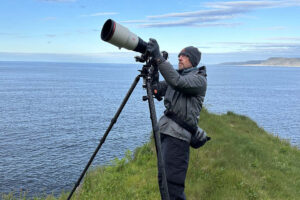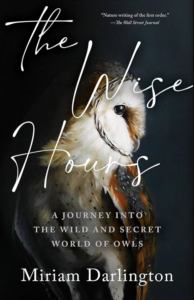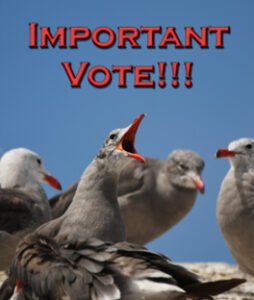By Elizabeth Rodrick
This article summarizes the natural history and population status of the sage-grouse as background reading before the BHAS January Program by Ashley Ahearn. Ms. Ahearn produced “Grouse” a fascinating eight-part BirdNote podcast about the most controversial bird in the West and what it can teach us about hope, compromise and life in rural America, https://www.birdnote.org/listen/birdnote-presents/grouse.
The Washington Department of Fish and Wildlife (WDFW) is soliciting comments by Dec. 30, 2020 on the proposal to up-list the Greater Sage-grouse from threatened to endangered status. The draft status review is available at https://wdfw.wa.gov/publications/02173. If you support this action and/or would like to provide comments, send an email to: TandEpubliccom@dfw.wa.gov.
Life History
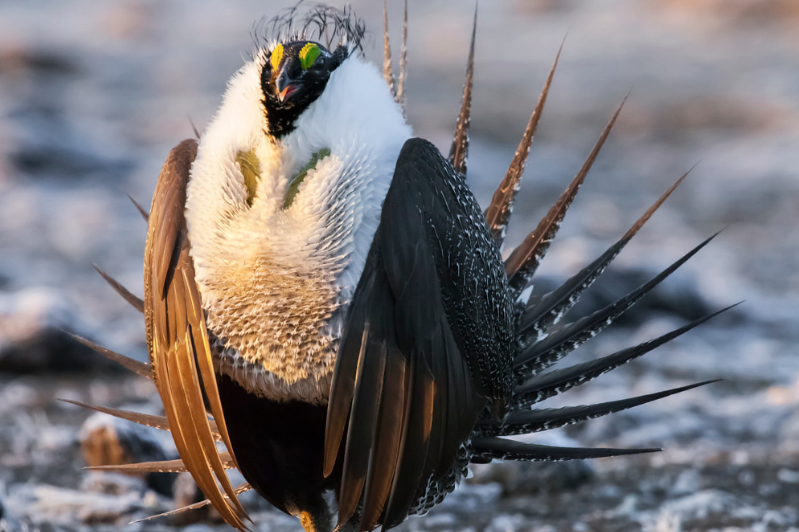
The Greater Sage-grouse, aka sage hen, sage cock, or sage chicken, is the largest grouse species in North America. Prior to European colonization, the Sage-grouse was found throughout the shrub-steppe of eastern Washington and was an important game bird for indigenous people. The grouse have dwindled to two isolated populations, one in Kittitas and Yakima counties on the U.S. Army Yakima Training Center, and the other in Douglas County near Moses Coulee. The 2020 wildfires likely wiped out other populations that were being re-established in Lincoln County and on Yakama Nation lands.
Sage-grouse grow up to two feet tall and 30 inches long and weigh from two to seven pounds. Males are larger and more colorful, especially when they inflate the yellow breast air sacs, emitting a popping sound to attract females during the mating dance. These displays occur during March when birds gather on “leks”, large open areas, where dominant males mate with about 80% of the females. Hens usually nest near the leks. They lay six to nine eggs in a nest under sagebrush, raise one brood per year, and males do not assist. The eggs hatch at 25-27 days and the chicks are precocial, feeding themselves, while mothers keep them safe and warm for a month or so.
These birds need large areas of shrub-steppe habitat. They have large home ranges, up to 12 square miles during the breeding season and annually averaging 36 square miles in eastern Washington. Quality nesting habitat near the lek with concealment cover is the most important factor in population success.
Sage-grouse are sagebrush obligates. They can tolerate the strong chemicals in sage, which comprises 60-80% of the adult annual diet, rising to over 95% in winter. Lacking a gizzard, this grouse cannot grind seeds. Moderate sagebrush canopy with a diverse herbaceous understory provides forbs and insects needed for healthy egg-laying and chick development. While sage-grouse do not require free water if succulent vegetation is available, they often move to riparian areas or irrigated fields in late summer.
Sage-grouse can live up to 9 years and possibly 15 years in the wild. A Washington study showed an annual adult survival rate of 56% in males and 72% in females. The survival rate for chicks to 50 days was 33%. Ravens, coyotes and badgers eat eggs and were responsible for many nest failures. Other studies suggest that predation on chicks can be high and limit population growth. Sage-grouse tend to avoid roads, electric lines, poles and towers that provide perches for avian predators, and prefer contiguous and undeveloped habitat.
Population and Habitat Status
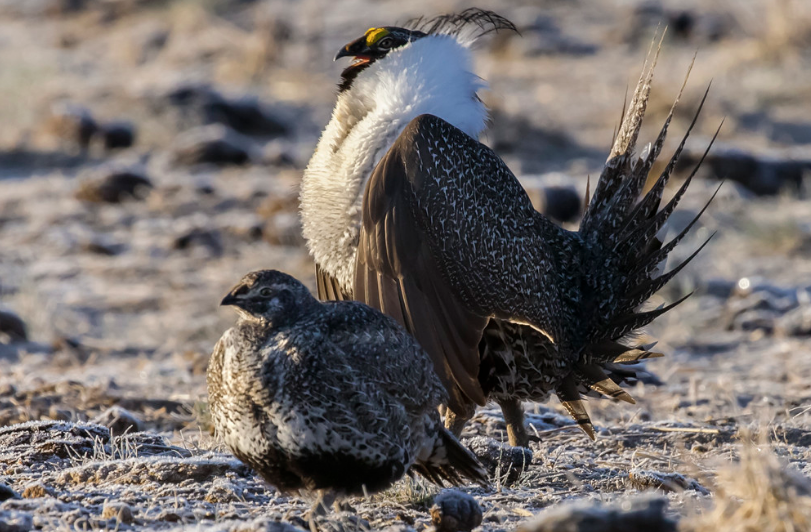
From 1950-1970, hunters observed the gradual decline of sage-grouse that coincided with dry land wheat farming and the large-scale irrigation projects that converted shrub-steppe habitat to crops. The 1970 statewide population of sage-grouse was estimated at 3200 individuals and has continued to decline to a 2020 estimate of 770 birds associated with 21 active leks. That was before the large summer wildfires that killed thousands of acres of sagebrush in the three core sage-grouse habitat conservation areas. If seed sources remain, it will take more than 10 years for sagebrush cover to return to levels that will support sage-grouse.
There has been little movement between Washington’s sage-grouse populations. WDFW scientists believe that these small, isolated populations are likely in an “extinction vortex”, suffering from inbreeding and reduced fitness that is exacerbated by habitat stressors and other population dynamics. Other grouse mortality occurs from collisions with fences, vehicles and powerlines.
Habitat quality has precipitously declined as well. Sage-grouse have survived primarily on large patches of shrub-steppe on public land, mixed with private land that contains some shrub-steppe and restored habitat that was enrolled in Farm Bill conservation programs. Within this matrix, sage-grouse use some cropland for leks and foraging. Larger areas not converted to cropland were typically grazed by livestock which provides winter habitat, but little perennial grass or forb cover needed for nesting, a result of historical heavy grazing.
The sage-grouse is rated as having moderate to high sensitivity to climate change. Increased temperature, drought, fire frequency and intensity pose a continued threat. Human population, development and agriculture continue to expand and fragment shrub-steppe habitat in eastern Washington.
Management
“The sage-grouse was state-listed as threatened in 1998 and a recovery plan was completed in 2004. From 2001-2015, the Columbia Basin sage-grouse population was a candidate for listing as a threatened Distinct Population Segment (DPS) under the U.S. Endangered Species Act. In 2015, the U.S. Fish and Wildlife Service issued a decision that the population in Washington did not meet the criteria for a DPS and listing of the Greater Sage-grouse across its entire range was not warranted. However, since that decision, genomic analyses highlighted the unique nature of the Washington population.” (WDFW 2020)
Federal, state and local regulations provide some protection but are not adequate to recover species like sage-grouse that require large, connected landscapes. The WDFW and partners acquired and restored habitat, transplanted grouse from nearby states, and worked on other recovery actions. Without these efforts and the time-limited Farm Bill habitat programs, the sage-grouse would already be extinct. Near-term reintroductions are questionable given the recent failure of the Yakama Nation reintroduction and the lack of suitable habitat after fires. Major funding is needed for fire management and habitat restoration.
For all the above listed reasons, WDFW is recommending endangered status for the sage-grouse and will continue to fight for their recovery.


